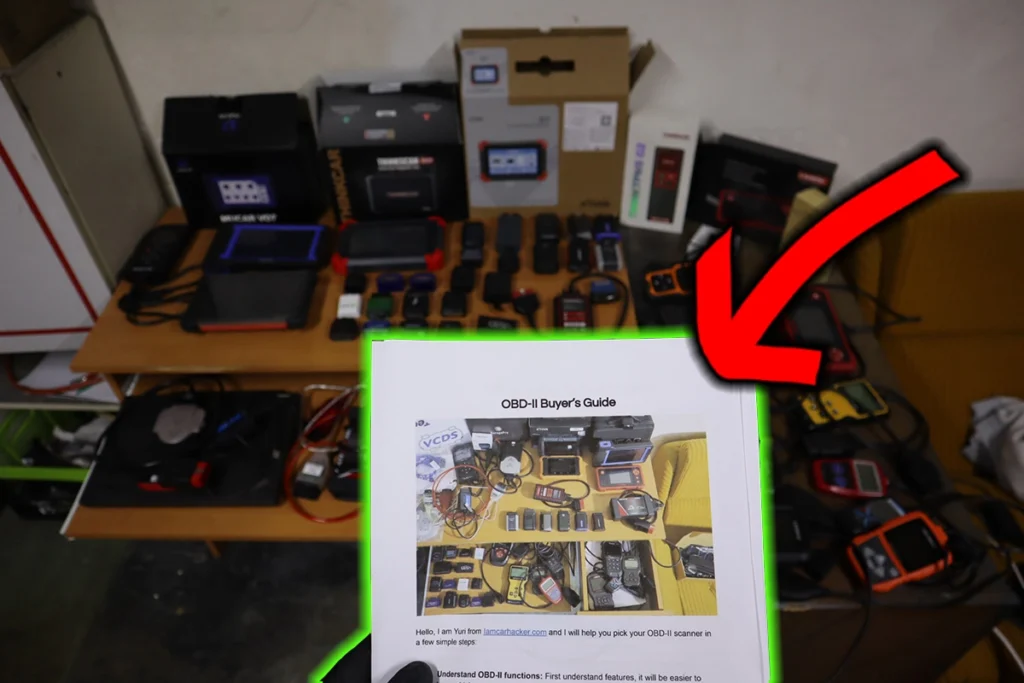The code P0138: Oxygen Sensor Circuit High Voltage (Bank 1, Sensor 2) points out a fault in the downstream oxygen sensor for Bank 1, and most likely is caused by a malfunctioning oxygen sensor or issues in the wiring and circuit related to it.
P0138 quick overview
| Meaning | P0138: Oxygen Sensor Circuit High Voltage (Bank 1, Sensor 2) |
| Is it serious? | It can be. While the vehicle might still run, it can lead to reduced fuel efficiency, increased emissions, and potential damage to the catalytic converter if not addressed. |
| Possible causes | – Malfunctioning or failed oxygen sensor (Bank 1, Sensor 2) – Short to voltage or open in the O2 sensor wiring circuit – Poor electrical connection in the O2 sensor circuit – Leaking fuel injector or high fuel pressure – Contaminated or damaged oxygen sensor – Faulty Engine Control Module (ECM) |
| How to diagnose? | 1. Read the code using an OBD-II scanner to confirm P0138 is present. 2. Visually inspect the wiring and connections related to Bank 1, Sensor 2 oxygen sensor for any signs of damage or disconnection. 3. Use a digital multimeter to check for proper voltage and resistance in the O2 sensor circuit. 4. Monitor the oxygen sensor’s data using a scanner to see if its readings are consistently high. 5. If the sensor is suspected to be faulty, consider swapping it with a sensor from another bank (if possible) to see if the code changes. 6. Check for any related Technical Service Bulletins (TSBs) for the specific vehicle model. 7. If all else fails, consider the possibility of a faulty Engine Control Module (ECM). |
| What is Bank 1 sensor 2? | Post-cat oxygen sensor for engine head 1. Read the full Bank1 vs Bank2 explanation. |
Free PDF: How to choose OBD2 scanner

I’ve made you a free PDF to choose the OBD2 scanner in 5 minutes.
✅ Which OBD2 scanner is best?
✅ Which type should you get (DIY, Pro, Hobby)
✅ What is the best scanner for the exact brand/feature (e.g best for BMW)
✅ How to get a Bi-Directional tool for as cheap as $40
✅ Discount coupons for scanners
PDF is 100% free and it is designed to help you pick a scanner in less than a few minutes! Not a boring 50-page guide.
Just tell me where to send it.
How to fix P0138 – learn from mechanics
I looked into P0138 service cases at iatn.com website where in the private forums the mechanics seek advice from other mechanics. I looked up a bunch of cases to help you decide how to fix your issue and see what would a real mechanic do to solve it.
Case #1: Mercury
1999 Mercury Villager 3.3L
- Vehicle Information:
- 1999 Mercury Villager, 3.3L engine
- Issue + Repair History:
- MIL on and fuel smell reported by the customer.
- Found three holes in the gas tank caused by a radio shop installing a CD changer.
- Initial codes: p0138, p0139 (both related to rear O2).
- Repaired fuel tank and replaced O2 sensor.
- Two weeks later, MIL on again and slight fuel smell reported.
- New codes: p0325 (Knock sensor), p0138 (Bank 1 sensor 2 switching slow), p0139 (Bank 1 sensor 2 switching high).
- Community Suggestions:
- Replace both rear O2 sensors with OEM parts.
- Check for a reflash for the problem.
- Note that the p0325 knock sensor code might not trigger the MIL on older Villager models.
- Check wiring near the O2 sensor connector for any breaks or corrosion.
- Final Fix:
- The vehicle was not yet fixed at the time of the last update. The technician planned to replace the O2 sensor again.
Case #2: Jeep
1997 Jeep Grand Cherokee Laredo 5.2L
- Vehicle Information:
- 1997 Jeep Grand Cherokee Laredo, 5.2L engine
- Issue + Repair History:
- Intermittent MIL lamp, turning on and off every two to three weeks.
- Code retrieved: p138 (high voltage bank one sensor two/ closed loop fault).
- No specific repair history mentioned.
- Community Suggestions:
- Bank 1 sensor 2 is the O2 sensor located in the exhaust on the same side as cylinder #1, positioned after the catalytic converter.
- Unplug the O2 sensors one at a time to identify which one is which.
- Possible PCM fault; try wiggling the PCM harness to see if the issue can be duplicated.
- Check if the rear O2 sensor wire is intermittently coming in contact with the driveshaft.
- Final Fix:
- Replaced bank one sensor 2 (post-catalytic converter) to address the p138 high voltage code.
Case #3: Chrysler
2006 Chrysler Pacifica Touring 3.5L
- Vehicle Information:
- 2006 Chrysler Pacifica Touring, 3.5L engine
- Issue + Repair History:
- Intermittent MIL lamp turning on and off.
- Codes retrieved: po135 (02 heater performance) and po138 (o2 voltage high).
- Previous repairs include replacing O2 sensors and the ECM, and checking the wiring.
- Noted that scanner parameters indicated “not sync,” leading to suspicion about timing belt synchronization.
- Community Suggestions:
- Check wiring closely and voltage going to O2 sensor.
- Ensure O2 heater fuse in the underhood fuse box is intact.
- Use Original Equipment (OE) sensors as Chrysler vehicles typically require OE sensors.
- Check O2 heater grounds and measure the pulsed 12 volts from the PCM to the O2 sensor heaters.
- Consider the possibility of the timing being out of sync, although this usually results in a specific DTC or poor running condition.
- Ensure the correct bank is being addressed; Bank 1 is on the firewall side, Bank 2 is on the front.
- Check the oxygen sensor heater grounds and the pulsed 12 volts from the PCM to the O2 sensor heaters.
- Final Fix:
- The issue was found in the harness PCM.
Case #4: Honda
1999 Honda Odyssey LX 3.5L
- Vehicle Information:
- 1999 Honda Odyssey LX, 3.5L engine
- Issue + Repair History:
- Vehicle displayed code P0420 (catalyst efficiency low).
- After clearing the code, emissions were checked. NOX was at 1400 ppm during power braking but below 20 ppm at idle.
- After driving 10 miles, code P0138 (O2 signal high, bank 1, sensor 2) appeared.
- Secondary O2 sensor was monitored but showed no issues.
- Previous repairs: remanufactured catalytic converter installed, both oxygen sensors replaced, EGR valve replaced, and EGR ports cleaned.
- Community Suggestions:
- Avoid using remanufactured catalytic converters; use Original Equipment (OE) instead.
- Check the O2 sensor heater fuse and the O2 sensor grounds.
- Ensure the use of Honda-specific parts, especially for the EGR valve.
- The after-cat O2 sensor should show a flat line in closed loop; if it’s fluctuating, it might indicate a problem.
- Consider replacing the O2 sensor if it fails after running for a while.
- Check if the back O2 is switching between 0.2-0.8 volts in closed loop; if it is, the catalytic converter might need replacement.
- Final Fix:
- The catalytic converter was replaced again, and the issue was resolved.
Case #5: Lexus
2011 Lexus ES350 3.5L
- Vehicle Information:
- 2011 Lexus ES350, 3.5L engine
- Issue + Repair History:
- Vehicle displayed code P0138 (Oxygen sensor circuit high voltage, Bank 1 Sensor 2).
- Sensor was replaced twice using Denso and NGK brands.
- Bank 1 Sensor 2 showed a voltage 120+ MV higher than Bank 2 Sensor 2.
- B1S2 impedance was 300 Ohms higher than B2S2.
- Sensors were swapped, leading to B2S2 showing higher voltage by 120 MV.
- Suspected a leaking injector initially, but later identified as a circuit issue.
- Wiring from both rear sensors was load tested and found to be good for 11 amps.
- ECM was suspected to be the issue.
- Previous repairs: None mentioned, as it was the vehicle’s first visit.
- Community Suggestions:
- B1S1 (Bank 1 Sensor 1) might be the cause of the P0138 code. Consider replacing both sensors on Bank 1.
- Check the O2 sensor heater fuse and the O2 sensor grounds.
- Ensure the use of Original Equipment (OE) sensors.
- The rear O2 sensor should not influence fuel mixture. Check the wiring, especially near the exhaust pipe.
- Consider checking the earth system.
- Check the A/F Ratio Sensor B1S1 and perform an active test for “A/F Control.”
- Refer to TSB L-SB-0109-09 for diagnostic tips related to the P0138 code.
- Final Fix:
- Replaced the B1S1 (Bank 1 Sensor 1) which led to a decrease in fuel trim values to 7% and B1S2 voltage dropped to .7 volts.
- After road testing for 7 miles, all readiness monitors passed except for the evap system.
How to diagnose P0138
I made you an overview of solving this DTC, based on all the advice that was suggested by certified mechanics to address this issue in previously mentioned service cases.
| Advice | Brief Description of Diagnostic Step |
|---|---|
| Replace with OE Sensors | Use Original Equipment (OE) sensors, especially for the affected bank. OE sensors often have better compatibility and performance with the vehicle’s system. |
| Check Wiring and Grounds | Inspect the wiring of the O2 sensors, especially near the exhaust. Ensure that the grounds for the O2 sensor and the O2 heater are secure and functioning. |
| Consider the Front O2 Sensor | The front O2 sensor (Bank 1 Sensor 1) can influence the rear sensor’s readings. If the front sensor is malfunctioning, it might cause the rear sensor to throw a code. |
| Load Test the Wiring | Perform a load test on the wiring from the O2 sensors to ensure they can handle the necessary current without issues. |
| Check for Related TSBs | Technical Service Bulletins (TSBs) might provide additional insights or known issues related to the code for specific vehicle models. |
| Monitor Fuel Trims | High long-term fuel trims can be an indicator of related issues. Monitoring these can provide insights into the root cause of the problem. |
| Avoid Remanufactured Parts | Especially for parts like catalytic converters, using remanufactured parts might not provide the same performance or compatibility as new or OE parts. |
Free PDF: How to choose OBD2 scanner

I’ve made you a free PDF to choose the OBD2 scanner in 5 minutes.
✅ Which OBD2 scanner is best?
✅ Which type should you get (DIY, Pro, Hobby)
✅ What is the best scanner for the exact brand/feature (e.g best for BMW)
✅ How to get a Bi-Directional tool for as cheap as $40
✅ Discount coupons for scanners
PDF is 100% free and it is designed to help you pick a scanner in less than a few minutes! Not a boring 50-page guide.
Just tell me where to send it.

Hi, I am Juraj “Yuri” Lukacko. I got frustrated by unhelpful and scammy mechanics, so I decided to learn everything about car diagnostics myself. I test dozens of new car diagnostic tools every month along with learning new strategies to fix and customize cars. About Juraj Lukacko (Yuri)